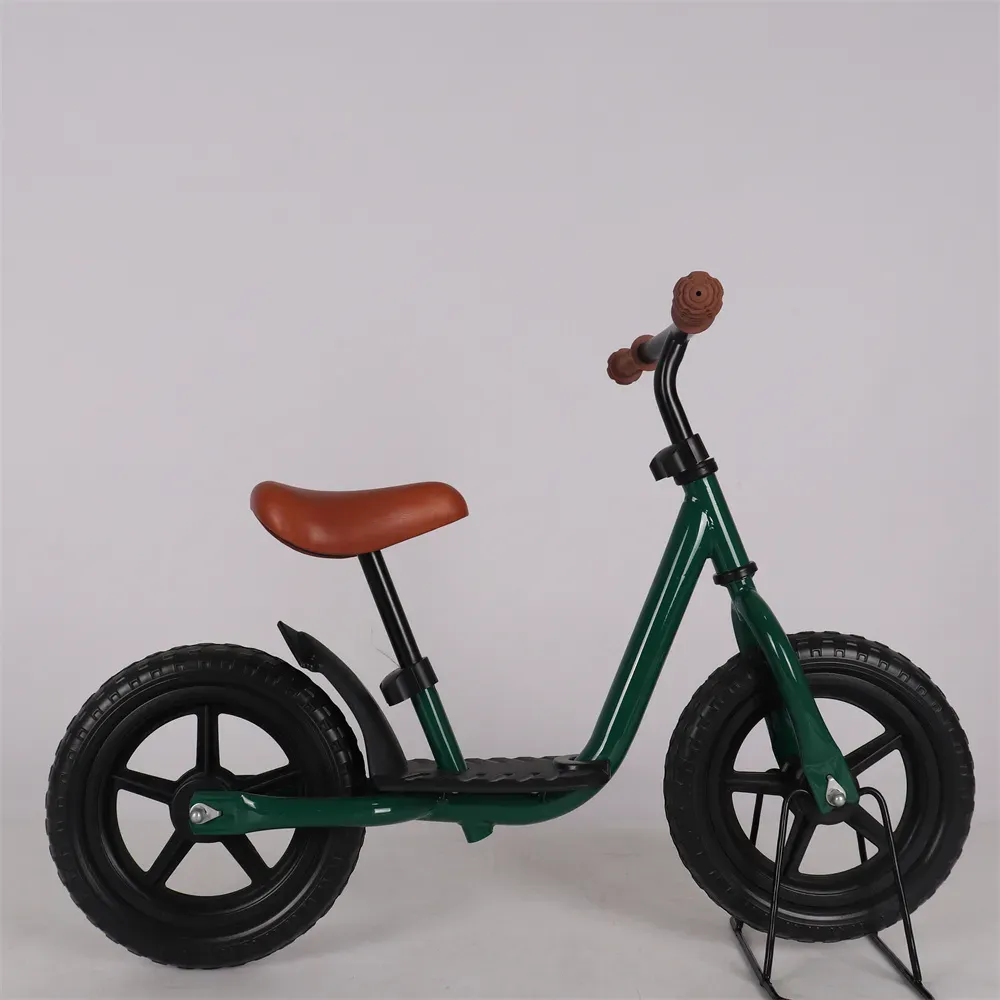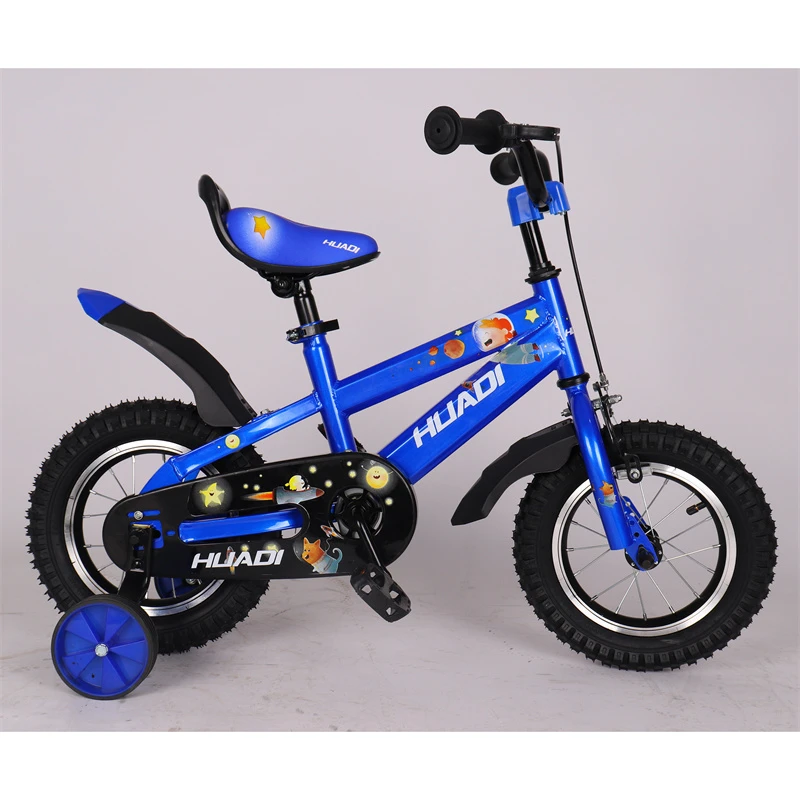Kids Balance Bikes
In the world of children's cycling, balance bikes have rapidly gained popularity as the ideal first step towards learning how to ride a bicycle. At Xingtai Zhongzhou Bicycle Co., Ltd., we specialize in high-quality wholesale children balance bikes that combine safety, comfort, and style. In this article, we will delve into the benefits of balance bikes, how they serve as an excellent introduction to cycling, and how our OEM kids balance bike factory can help you stock the best products for your needs.
What is a Kids Balance Bike?
A kids balance bike is a two-wheeled bicycle designed specifically for young children, typically aged 18 months to 5 years. Unlike traditional bicycles, balance bikes do not have pedals; instead, they allow children to scoot along with their feet while learning to balance. This unique design helps children develop their coordination and balance skills in a safe, controlled environment.
Xingtai Zhongzhou Bicycle Co., Ltd. offers a range of wholesale children balance bikes that cater to various ages and skill levels. Our balance bikes are crafted with durable materials and innovative designs to enhance the riding experience while ensuring the utmost safety for little adventurers.
Benefits of Kids Balance Bikes
One of the primary advantages of a balance bike is that it builds a child’s confidence on two wheels. As they scoot along, kids learn to balance and steer without the fear of falling off a bike. Here are some key benefits:
-
Enhanced Balance and Coordination: Balance bikes help children develop their motor skills as they learn to balance and steer simultaneously.
-
Easy Transition to Pedal Bikes: Once a child masters riding a balance bike, transitioning to a pedal bike becomes significantly easier. They already have the crucial balancing skills necessary for riding.
-
Safety First: Our wholesale children balance bikes come equipped with features like puncture-proof tires and soft grips, ensuring a safe riding experience even for the youngest riders.
-
Encouragement of Physical Activity: Riding a balance bike helps keep children active, promoting physical fitness from an early age.
-
Independence and Confidence: As children learn to ride, they build self-esteem and a sense of independence, which can positively impact other areas of their lives.
How to Teach a Kid to Ride a Balance Bike
Teaching a child to ride a balance bike can be an enjoyable and fulfilling experience for both parent and child. Here’s a step-by-step guide on how to do it effectively:
-
Choose the Right Bike: Make sure to select the right size from our OEM kids balance bike factory. The bike should fit the child comfortably, allowing them to place their feet flat on the ground.
-
Start with the Basics: Begin in a flat, open area where the child feels safe. Encourage them to sit on the bike and practice walking while seated.
-
Scooting Practice: Once they feel comfortable, have them lift their feet slightly off the ground and scoot along using their feet. This helps them understand balance.
-
Introduce Gliding: As they gain more confidence, encourage them to lift their feet off the ground for short glides. This is where the balance skills start to develop.
-
Encourage, Don’t Rush: Be patient and provide plenty of encouragement. Allow them to take their time and enjoy the process.
-
Transition to Pedals: Once your child is comfortable gliding on their balance bike, they will be ready to try a pedal bike. The transition will feel natural and easy due to the skills they've developed.
At Xingtai Zhongzhou Bicycle Co., Ltd., we understand the importance of quality and safety, which is why our kids balance bikes are designed to make learning fun and easy.
As an established OEM kids balance bike factory, we pride ourselves on delivering exceptional products to our customers. Here are several reasons why partnering with us is the right choice:
-
High-Quality Materials: All our balance bikes are manufactured from durable materials that ensure longevity and safety.
-
Customizable Designs: We offer OEM services, allowing you to customize designs, colors, and branding to meet your specific needs.
-
Competitive Pricing: Our wholesale prices make it feasible for retailers to stock up on high-quality balance bikes without breaking the bank.
-
Expertise and Experience: With years of experience in the industry, we know what works and what doesn’t, ensuring you receive the best advice and products.
-
Customer Support: Our team is dedicated to providing you with the support you need to make informed decisions about your balance bike inventory.

Kids Balance Bike FAQs
What age is suitable for a kids balance bike?
Most children can start using a balance bike between 18 months and 5 years. However, the right age may vary depending on the child's physical development and comfort level.
How do I know if the balance bike is the right size for my child?
A balance bike is the right size when your child can sit on the saddle with both feet flat on the ground. They should also be able to reach the handlebars comfortably.
Are balance bikes safe for my child?
Yes, balance bikes are designed with safety in mind. Our wholesale children balance bikes from Xingtai Zhongzhou Bicycle Co., Ltd. come with safety features like soft grips and stable frames.
Can balance bikes be used on different terrains?
Yes, balance bikes can be used on various terrains, including pavement, grass, and dirt paths. However, it’s essential to choose a bike with appropriate tires for the intended surface.
How long will it take for my child to learn to ride a balance bike?
The time it takes for a child to learn varies by individual. Many children can learn to balance and glide within a few days or weeks of practice, while others may take longer. Patience and encouragement are key!
In conclusion, investing in a kids balance bike from Xingtai Zhongzhou Bicycle Co., Ltd. is a great decision for retailers and parents alike. With our high-quality products and comprehensive support, you can help children embark on their cycling journey with confidence and joy.
-
Baby Balance Bike OEM Service – Kids No-Pedal, Lightweightព័ត៌មានNov.10,2025
-
OEM Kids Bike Children Bicycle – Cheap Wholesale Bicyclesព័ត៌មានNov.10,2025
-
Kids Bike New Model 12–18 inch Boys & Girls Bike, Adjustableព័ត៌មានNov.10,2025
-
China Cheap Price Safe Kids Bike for 10yo w/ Training Wheelsព័ត៌មានNov.10,2025
-
China CE-Certified Kids Balance Bike, Guaranteed Qualityព័ត៌មានNov.10,2025
-
Colorful Outdoor Flashing Carton Children Scooter for Kidsព័ត៌មានNov.10,2025
-
Best Price Kids Balance Bike – Superior Quality, No Pedalsព័ត៌មានNov.10,2025
Related ផលិតផល
Kids' Balance Bikes - Safe & Fun Riding for Young Learners
The Joy of Kids' Balance Bikes A Path to Independence
In recent years, balance bikes have surged in popularity as a fantastic way to introduce young children to the joy of cycling. Specifically designed for kids, these two-wheeled rides eliminate the need for pedals, allowing children to focus on mastering balance and coordination. The emergence of kids' balance bikes has transformed the way parents think about teaching their little ones how to ride, offering numerous developmental benefits that extend beyond just cycling skills.
Balance bikes are typically lightweight and have a low frame design, making it easy for toddlers to climb on and off. Without the complexity of pedals, children can use their feet to push and glide, becoming familiar with the mechanics of balance in a safe and accommodating environment. This simplicity encourages confidence, as kids can start riding almost instantly without the fear of falling caused by over-complicated features.
One of the most significant advantages of balance bikes is their ability to enhance a child's motor skills. As children learn to balance, steer, and brake, they are developing essential physical skills that will help them in various aspects of life. The process of using a balance bike engages core muscles and improves coordination, both of which are vital for other physical activities. Moreover, this early introduction to cycling lays a strong foundation for transitioning to traditional pedal bikes when the time comes.
The developmental benefits of balance bikes extend to emotional and social growth as well. Riding a balance bike fosters a sense of independence in young children. As they learn to ride confidently, they gain a sense of freedom that is exhilarating and empowering. The thrill of mastering a new skill can boost self-esteem and encourage a positive attitude toward learning new things.
kids' balance bikes

Moreover, balance bikes create opportunities for social interaction. Children often ride together, which encourages teamwork, sharing, and communication. Whether they are navigating a park path or giggling at their little races, these shared experiences foster a sense of camaraderie and can help develop lasting friendships.
Parents also find balance bikes to be a practical early childhood investment. Unlike training wheels, which can prolong the learning process and create dependency, balance bikes encourage independent riding sooner. Most kids can transition from a balance bike to a pedal bike with relative ease – often within a few days. This efficiency not only saves parents time but also reduces the fear and potential tears associated with falling off a traditional bike.
Safety is always a major concern for parents, and balance bikes come with a lower risk of injury. The lack of pedals and the ability to touch the ground easily means that children can stop themselves from falling by simply putting their feet down, reducing the likelihood of nasty tumbles.
In conclusion, kids' balance bikes are more than just a fun toy; they are a powerful tool for growth and development. By teaching balance, coordination, and independence, they set the stage for a lifetime love of cycling and physical activity. Investing in a balance bike is not only a gift for a child but also an investment in their health, confidence, and social skills. As families embrace the joy of riding together, balance bikes will continue to carve out their place in the hearts of children and parents alike.
-
Baby Balance Bike OEM Service – Kids No-Pedal, Lightweightព័ត៌មានNov.10,2025
-
OEM Kids Bike Children Bicycle – Cheap Wholesale Bicyclesព័ត៌មានNov.10,2025
-
Kids Bike New Model 12–18 inch Boys & Girls Bike, Adjustableព័ត៌មានNov.10,2025
-
China Cheap Price Safe Kids Bike for 10yo w/ Training Wheelsព័ត៌មានNov.10,2025
-
China CE-Certified Kids Balance Bike, Guaranteed Qualityព័ត៌មានNov.10,2025
-
Colorful Outdoor Flashing Carton Children Scooter for Kidsព័ត៌មានNov.10,2025
-
Best Price Kids Balance Bike – Superior Quality, No Pedalsព័ត៌មានNov.10,2025








